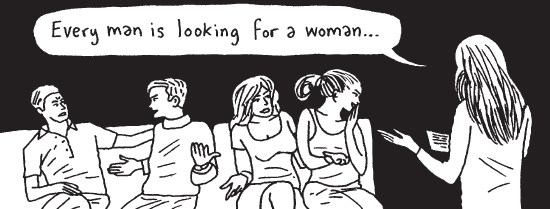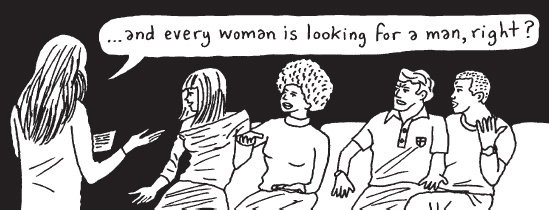Sexual Orientation
Printed Page 134
Another demographic characteristic that has become increasingly important to consider and acknowledge is the sexual orientation of your audience members. This can include straight men and women as well as lesbian, gay, bisexual, transgendered, and queer and/or questioning individuals—or LGBTQ for short. In spite of the 2013 Supreme Court rulings concerning marriage equality (generally seen as a victory for the LGBTQ community), there has still been controversy surrounding questions of status and legal protection for LGBTQ members. Not everyone in the country feels comfortable with or accepting of people based on differences in sexual orientation.
Given this environment, some might object to acknowledging the LGBTQ demographic, but we strongly believe that acknowledging members of the LGBTQ community is not only a smart and strategic move for a speaker but also an ethical responsibility. Statistics vary, but estimates suggest that gay or lesbian people (only two parts of the LGBTQ designation) account for between 5 and 10 percent of our population.4 Since speakers have a responsibility to all members of their audiences—not simply those in the dominant majority—ignoring LGBTQ listeners means excluding and potentially alienating a substantial portion of an audience from the discussion.

Acknowledging a difference in sexual orientation can be accomplished both overtly and passively, depending on what is appropriate for your speech and your situation. Open and overt acknowledgment of these differences might be accomplished by including examples or illustrations that reference LGBTQs as well as straight people. For example, a speech on conflict in relationships might include examples of gay or lesbian couples in the same breath as examples of heterosexual couples. Likewise, a speech that deals with parenting could include the story of two fathers raising a child, along with examples featuring a mother and father or a single parent.
You can offer passive acknowledgment of the LGBTQ community (and do so sensitively) through inclusive word choice when referencing sexual or relational orientation. For example, instead of only speaking of “married couples” or “a wife searching for a husband” (or vice versa), you might refer to “loving partners” or “individuals looking for a long-term commitment.” Inclusive word choice invites everyone in the audience to share in the speech while avoiding language that privileges one form of sexual orientation over another.
